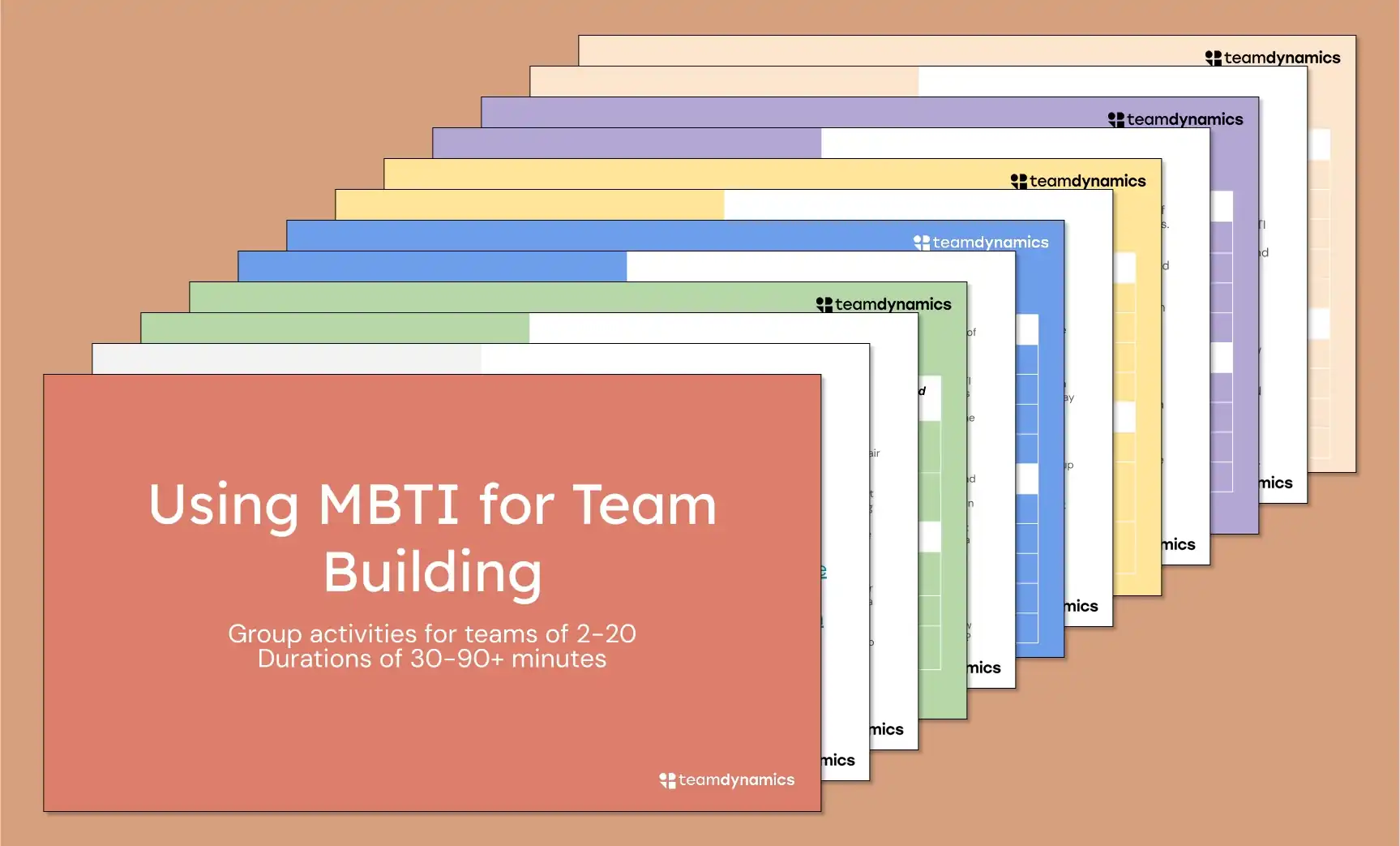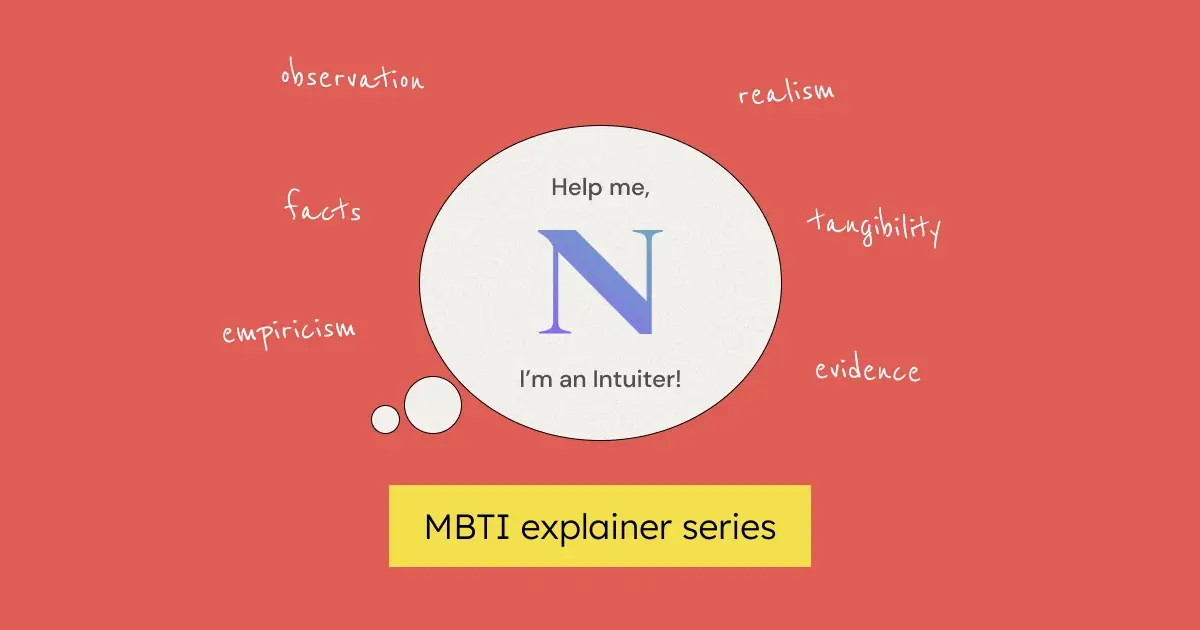Ever taken a personality test and found you're a 'Feeler' according to the Myers-Briggs Type Indicator (MBTI)? That means you're someone who gives priority to emotions, values, and the impact of decisions on people. You add a vital component to the MBTI chemistry of any team, bringing in empathy and understanding.
But what happens when you find yourself feeling out of sync in a team that leans heavily towards logic and rational thinking? Perhaps your ideas are often overlooked, or you find it hard to connect with your team's decision-making style. This clash in MBTI chemistry can be frustrating, demotivating, and even isolating at times. (Are you a Thinker looking to get along better with your Feeler colleagues? Check out our other resource guide!)
In this blog post, we're diving into these issues, providing useful insights and advice on how to navigate and thrive in a workspace where thinking, not feeling, tends to rule the roost. It's time to take control and positively influence your team's MBTI chemistry. Let's explore this journey together.
Understanding the Difference between Thinkers and Feelers
Let's talk about the basics of MBTI chemistry. In the world of MBTI, we have 'Thinkers' and 'Feelers'. Each brings a unique flavor to the team dynamic.
'Thinkers' make decisions based on logic and facts. They look at the big picture, evaluate the pros and cons, and aim to make decisions that are objective and rational. They value truth and justice, and they focus on ensuring fairness in every situation.
On the other hand, 'Feelers' make decisions based on personal values and how their choices will affect others. They're concerned with harmony and tend to consider the emotional impact of their decisions. They value empathy, understanding, and tend to focus on creating a positive environment.
Now, let's imagine a typical day at work. The team needs to decide on a vendor for their next project. A Thinker might say, "Vendor A is offering the same service for a lower price. It makes sense to choose them." They focus on the practical and financial aspects.
{{inline-cta}}
In contrast, a Feeler might say, "Yes, but Vendor B is known for their ethical work practices, and they have a great reputation. Our team could feel good about working with them." They focus on the emotional and ethical implications of the decision.
It's not about who's right or wrong in this scenario. It's about understanding these different perspectives, and how they contribute to the overall MBTI chemistry of a team. Recognizing these differences can help us appreciate the unique strengths each person brings to the table.
Navigating a Thinker's World as a Feeler
In a team where thinking trumps feeling, a Feeler might sometimes feel like they're swimming against the current. This imbalance in the MBTI chemistry can pose unique challenges for Feelers.
Thinker-dominated teams often value objectivity, data, and efficiency. In such environments, decisions are typically made based on what makes the most logical sense, rather than what aligns with personal values or feelings. For a Feeler, this can be a tough nut to crack.
Imagine this scenario: You're in a team meeting discussing how to deal with a project that's running behind schedule. As a Feeler, you suggest giving the team some time off to recharge and then come back to work more efficiently. You argue that rested and happy employees will be more productive.
However, your suggestion is quickly dismissed. The common response is, "That doesn't make sense. We're already behind; we can't afford to take time off." You feel disheartened, as your perspective was overlooked because it was not perceived as 'logical'.
For all the Feelers out there who've experienced this, remember, your perspective is equally valuable. You see things others don't. You bring balance to the MBTI chemistry, reminding your team that success isn't just about efficiency and logic - it's about people too.
Looking to use MBTI for team building? Download these free templates for MBTI team building workshops!
Strategies for Feelers to Navigate a Thinker-Dominated Team
As a Feeler amidst Thinkers, your unique perspective adds depth to your team's MBTI chemistry. Here are expanded strategies to help you make a positive impact on your team.
1. Respect Differences by Understanding Where Your Team is Coming From
Understanding that Thinkers and Feelers approach decision-making differently is key. When a Thinker asks for more data or logical reasoning, it's not a dismissal but a request from their perspective. For example, in a project planning meeting, if a Thinker requests more statistical proof for your proposal, instead of feeling discouraged, see it as an opportunity to strengthen your idea with facts. This mutual respect can lead to more robust ideas and better team decisions.
2. Communicate Effectively by Flexing Your Style
As a Feeler, you're adept at understanding emotions, but it's equally essential to communicate your thoughts logically when dealing with Thinkers. Let's say you're suggesting a new feedback system to make everyone feel more valued. To get your point across effectively, present it logically: "Implementing this system can increase employee satisfaction, which research shows can boost productivity by 12%." Backing your emotionally intuitive ideas with logical reasoning can make your suggestions more appealing to Thinkers.
3. Leverage Empathy as One of Your Superpowers
Your empathetic nature is a valuable asset. It allows you to sense when team morale is low or when someone is struggling. Utilize this to build a supportive team atmosphere. For example, if you notice a team member feeling stressed due to a tight deadline, empathize with them and help devise a more manageable timeline or share some of their workload if possible. You could also suggest to your manager the benefits of mental health days, using your own observation backed with research showing reduced stress leads to increased productivity.
4. Showcase the Benefits of Emotional Intelligence
Emphasize the importance of emotional intelligence in the workplace. For example, propose team activities that involve emotional intelligence, such as empathy exercises or workshops on effective emotional communication. Show your team that understanding and managing emotions can lead to better collaboration and conflict resolution.
5. Assess Your Team's Norms and Review Them Together
Oftentimes teams fall into behavioral norms without much thought or intention. A Thinker-dominated team likely has elements of team culture that could be optimized to improve team performance and increase inclusiveness across different personalities. Try a team personality test (like TeamDynamics) to analyze your team's ways of working and use that information to facilitate a team discussion about how you communicate and collaborate to get work done.
Remember, your unique perspective as a Feeler brings balance to your team. The key is to navigate these differences in ways that benefit you and your team. These strategies can help you build a stronger, more understanding team dynamic, enriching the MBTI chemistry of your workspace.
The Value of Balance in Decision-Making
Imagine a world where every musical band had only guitarists, or every soccer team had only goalkeepers. Sounds a little off, right? That's because we inherently understand that balance is crucial for success. The same principle applies to our work teams and especially to decision-making. Having a mix of Thinkers and Feelers can significantly enhance your team's effectiveness and harmony. Here's why:
Firstly, balance brings about comprehensive decision-making. While Thinkers focus on facts, logic, and objectivity, Feelers consider the emotional implications and the impact on people. This combination ensures decisions are not only practical but also empathetic, leading to more sustainable and inclusive solutions.
Secondly, a balanced team creates a learning environment. Feelers and Thinkers can learn from each other's strengths, fostering personal growth and mutual respect. Thinkers can become more in tune with their feelings and those of others, while Feelers can improve their logical reasoning skills.
Lastly, balanced teams are more adaptable. Whether a situation calls for a logical analysis or emotional understanding, a balanced team can handle it effectively.
Let's look at an example: Imagine a tech company planning to launch a new product. The Thinkers in the team focus on the product's technical features, cost-effectiveness, and market competition. On the other hand, the Feelers consider how customers might emotionally connect with the product, its potential to improve users' lives, and the impact of the launch timing on the team's workload. By combining these perspectives, the team designs a product that's not only technologically advanced and cost-effective but also user-friendly and launched with an emotionally engaging campaign at a time that doesn't overburden the team. The result? A successful launch, a well-received product, and a motivated team.
In conclusion, just like a well-cooked meal needs the right balance of flavors, your team needs a healthy balance of Thinkers and Feelers. This balance can significantly boost your team's effectiveness, learning, adaptability, and, ultimately, its MBTI team chemistry.
Conclusion: Embracing the Balance of Thinkers and Feelers
And there you have it! As a Feeler in a Thinker's world, you've got a unique and powerful role to play. Embrace your emotional intelligence, your empathy, and your intuitive decision-making style. Remember, you bring a perspective that is just as valuable as your more logically inclined colleagues.
In fact, a team that successfully combines the strengths of both Thinkers and Feelers can reach new heights. It's all about finding that sweet spot between logic and emotion, between hard facts and the human touch. This balance leads to decisions that are not only effective but also empathetic, inclusive, and sustainable.
So, Feelers, take heart. Though it might sometimes feel like you're swimming against the tide in a Thinker-dominated environment, your unique skills are needed and valuable. Use the strategies we've shared to navigate your workplace more effectively, and remember, you're not alone. Reach out to others, share your experiences, learn from your Thinker colleagues, and continue to bring your whole self to work.
By understanding and appreciating our differences, we can foster better MBTI team chemistry, making our workplaces more balanced, harmonious, and successful. After all, it's our diverse perspectives that drive innovation, spark creativity, and build strong, effective teams. So, here's to all the Feelers out there, thriving in a Thinker's world!
Check out our other MBTI resources!
We hope you've found this guide useful. Remember, everyone's experience is unique, and it's about finding strategies that work best for you. If you enjoyed reading this, don't keep it to yourself! Share it with your friends, colleagues, or anyone you think could benefit from it. Let's create a more understanding and inclusive workplace together!
MBTI is one of the most popular personality tests, and people are always asking us how they can better use it with their teams. Here are a few other useful articles you can try:
And if you're looking to crack the code on working with a specific MBTI type, check out our guides written just for you:
Interested in diving deeper into personality types, teamwork, and team performance? We've got a treasure trove of insightful articles just waiting for you to explore. Check out our other blogs on topics like team dynamics, effective communication strategies, and more in-depth dives into different personality tests. And check back often - we're always publishing more great content!




.png)









































